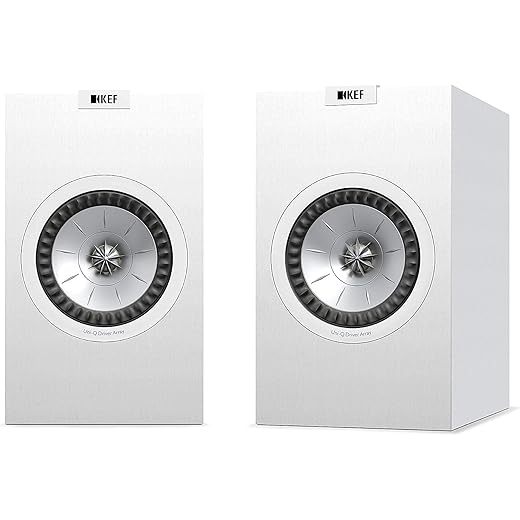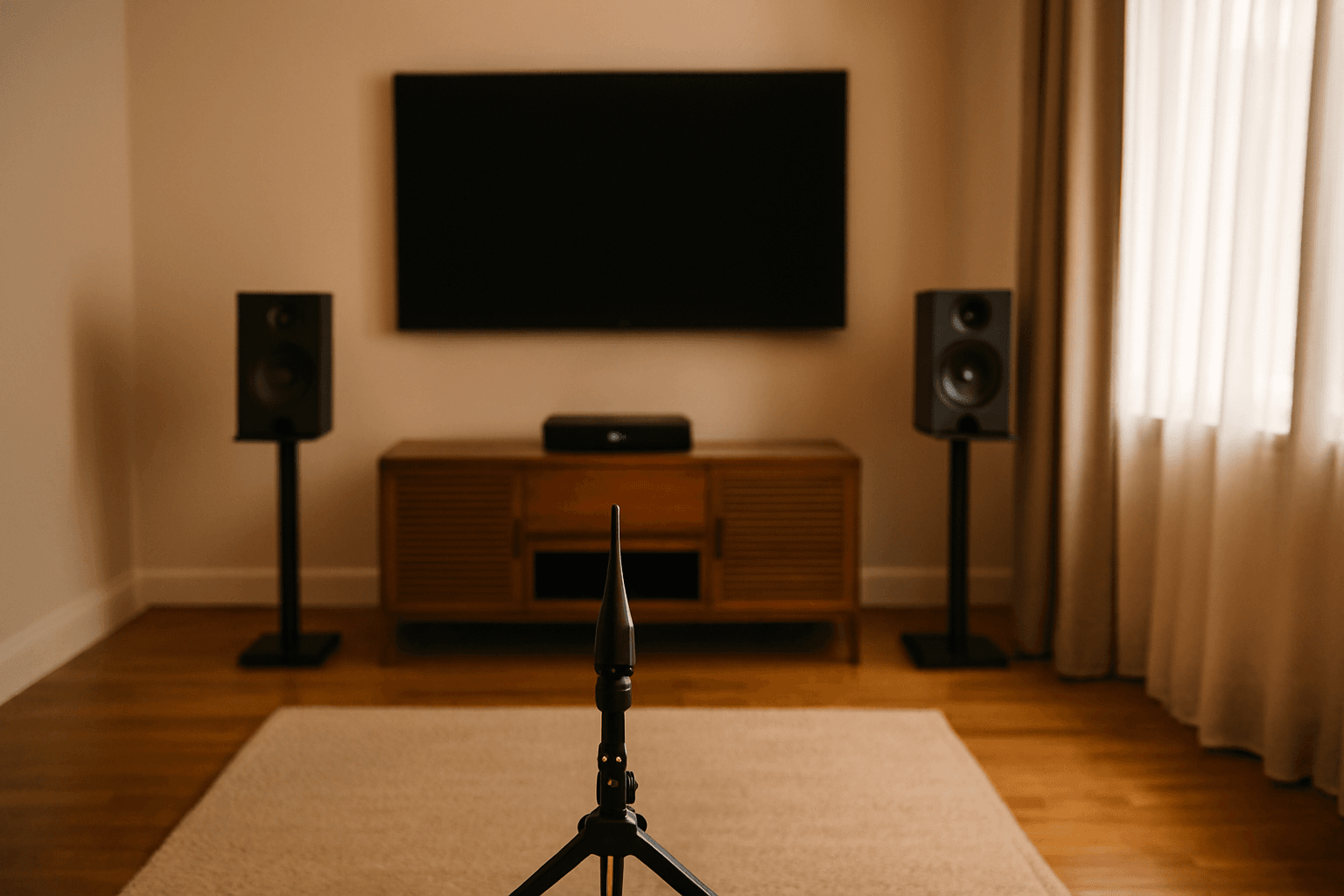When we talk about high-fidelity sound, the conversation often centers on speakers, amplifiers, DACs, and cables. But there’s a silent influencer that shapes every note, every nuance, and every emotional contour of your music: the room itself.
Room acoustics are the most easily overlooked—and often the most disruptive—element in the listening chain. Walls reflect, corners trap, floors resonate. Even the most meticulously engineered speaker can sound muddy, boomy, or lifeless if the room imposes its own fingerprint. Bass modes, early reflections, and phase cancellations can distort the very essence of what the artist intended.
🛠 Enter Room Correction Technology
Room correction is a set of digital tools designed to measure and compensate for the acoustic quirks of your space. Using microphones, software, and signal processing, these systems analyze how sound behaves in your room—then apply filters to neutralize the distortions.
At its core, room correction aims to:
- Flatten frequency response: Reducing peaks and dips caused by room modes
- Align phase and timing: Ensuring coherent arrival of sound across drivers and channels
- Preserve musicality: Enhancing clarity without sterilizing the emotional impact
These systems don’t “fix” bad speakers or replace acoustic treatment—but they do help your gear perform closer to its design intent, especially in real-world spaces where ideal conditions are rare.
🧠 How It Works
Most room correction systems follow a similar workflow:
- Measurement: A calibrated microphone captures test tones from your speakers at multiple positions.
- Analysis: Software identifies problematic frequencies, phase issues, and timing delays.
- Correction: Filters are applied via DSP (digital signal processing) to adjust the output in real time.
Some systems allow custom target curves, multi-subwoofer integration, and even time-domain correction—bringing studio-grade precision to home listening.
🎶 Why It Matters
For curators, audiophiles, and anyone who treats listening as a ritual of emotional clarity, room correction is not just a technical upgrade—it’s a philosophical one. It’s about removing the veil between you and the recording, letting the ensemble speak without interference.
Whether you’re streaming from a network player, spinning vinyl, or tuning a multi-channel setup, room correction helps ensure that what you hear is shaped by the music—not by the furniture, walls, or ceiling.
🎛️ Comparing Popular Room Correction Systems
Room correction is no longer a niche feature—it’s a core part of modern audio design. Whether embedded in speakers, amplifiers, or streamers, these systems aim to neutralize the room’s influence and reveal the music’s true voice. Below is a curated comparison of the most influential technologies in this space.
🧠 1. Anthem Room Correction (ARC®)
Used by: Paradigm, Anthem
Philosophy: Scientifically neutral, emotionally transparent
Strengths:
- Developed in collaboration with the National Research Council of Canada
- Measures multiple mic positions for spatial averaging
- Offers custom target curves and phase alignment
- ARC Genesis adds advanced filtering and user control
Workflow: - Requires a calibrated mic and PC/Mac or iOS device
- Simple interface, fast setup
- Ideal for Paradigm speakers with built-in DSP
Sound Signature: Clean, balanced, and unobtrusive—designed to let the speaker’s voice shine
Limitations: Only available on compatible Paradigm and Anthem gear
🧠 2. Dirac Live
Used by: NAD, Arcam, JBL, miniDSP, Monolith, Emotiva, and more
Philosophy: Precision through impulse response correction
Strengths:
- Corrects both frequency and time domain (phase)
- Offers Bass Control and Dirac ART (Active Room Treatment)
- Highly customizable target curves and filter design
- Multi-subwoofer optimization
Workflow: - Requires Dirac-enabled hardware and software license
- Steeper learning curve, but powerful for tweakers
- Compatible with stereo and multichannel setups
Sound Signature: Tight, coherent, and immersive—especially in imaging and bass control
Limitations: Can be complex for beginners; licensing costs vary
🧠 3. RoomPerfect
Used by: Lyngdorf Audio, Steinway Lyngdorf
Philosophy: Preserve the room’s character while correcting its flaws
Strengths:
- Works well in acoustically challenging or untreated rooms
- No need for symmetrical mic placement
- Minimal coloration, musical presentation
Workflow: - Uses proprietary mic and measurement process
- Very user-friendly, fast calibration
Sound Signature: Natural and organic—less “corrected,” more “refined”
Limitations: Only available on Lyngdorf gear; limited tweakability
🧠 4. Trinnov Optimizer
Used by: Trinnov Audio processors (Altitude series, ST2, Amethyst)
Philosophy: Studio-grade spatial mapping and correction
Strengths:
- Uses 3D microphone to map speaker positions and room geometry
- Corrects frequency, phase, and spatial alignment
- Trusted in mastering studios and high-end cinemas
Workflow: - Requires Trinnov processor and proprietary mic
- Deep configuration options for professionals
Sound Signature: Hyper-precise, immersive, and spatially coherent
Limitations: High cost; complexity suited for advanced users
🧠 5. Audyssey MultEQ XT32
Used by: Denon, Marantz, Integra
Philosophy: Accessible correction for home theater and stereo
Strengths:
- Widely available in AVRs
- Dynamic EQ and subwoofer calibration
- App-based curve editing (with paid upgrade)
Workflow: - Simple mic setup and guided calibration
- Good results with minimal effort
Sound Signature: Smooth and listener-friendly, though less precise than Dirac or ARC
Limitations: Limited phase correction; less effective in complex rooms
🧠 6. Focus Fidelity Impala
Used by: DIY setups, Roon users, and 2-channel purists
Philosophy: Transparent correction with full user control
Strengths:
- Generates FIR filters from REW measurements
- Works with convolution engines like Roon or HQPlayer
- Ideal for stereo setups and custom workflows
Workflow: - Requires measurement software and manual filter loading
- High flexibility, but technical
Sound Signature: Transparent and customizable—depends on user skill
Limitations: No real-time correction; not plug-and-play
🧩 Summary Table
| System | Frequency Correction | Phase Correction | Custom Curves | Multi-Sub Support | Ease of Use | Hardware Dependency |
|---|---|---|---|---|---|---|
| ARC® | ✅ | ✅ | ✅ | ✅ | ⭐⭐⭐⭐ | Paradigm/Anthem only |
| Dirac Live | ✅ | ✅✅ | ✅✅ | ✅✅ | ⭐⭐⭐ | Broad support |
| RoomPerfect | ✅ | ✅ | ❌ | ❌ | ⭐⭐⭐⭐ | Lyngdorf only |
| Trinnov | ✅✅ | ✅✅ | ✅✅ | ✅✅ | ⭐⭐ | Trinnov only |
| Audyssey XT32 | ✅ | ❌ | ✅ (paid app) | ✅ | ⭐⭐⭐⭐ | AVR-based |
| Focus Fidelity | ✅✅ | ✅ | ✅✅ | ❌ | ⭐⭐ | DIY setups |
🎶 Final Thoughts
Room correction is not just a technical fix—it’s an editorial decision. Each system carries its own philosophy about what should be corrected, preserved, or enhanced. ARC and Dirac aim for neutrality and precision. RoomPerfect leans into musicality. Trinnov offers surgical control. Audyssey provides accessibility. Focus Fidelity invites deep customization.




Even casual listeners are beginning to recognize the importance of room acoustics as they move beyond earbuds and soundbars toward more intentional setups. As speaker specifications become more transparent and accessible, terms like “frequency response,” “room modes,” and “DSP correction” are entering everyday vocabulary. Many first-time buyers, after investing in a well-reviewed pair of floorstanders or bookshelf speakers, quickly discover that their room—not their gear—is the limiting factor. This growing awareness is driving interest in room correction systems, not as luxury add-ons, but as essential tools for unlocking the full potential of their investment.

